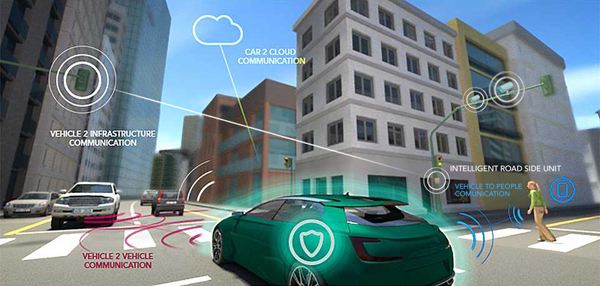
Telematics: A proven way to assess, price and reduce risk
With more people on the road more often than ever before, the frequency and severity of auto claims is at an all-time high according to the Federal Reserve Bank of St. Louis. These factors are having a major impact on the US commercial auto insurance industry, which recently reported its worst underwriting performance since 2001. Faced with escalating losses for the sixth consecutive year, the commercial auto insurance industry is going through a fast transformation, increasingly turning to telematics-driven programs for access to data allowing them to assess and price risk more accurately than ever before. These usage-based insurance programs are no longer just experiments, but are now considered a competitive advantage for insurers that roll them out.
To improve the claims process and decrease underwriting losses, commercial auto insurers should offer customers cost-effective usage-based insurance telematics solutions, such as custom driving scoring models and cooperative driving programs, so that they can assess fleet driving behavior data in real-time and more accurately price insurance premiums.
Reinventing risk assessments with custom driving scoring models
Traditionally, when an insurer priced a commercial vehicle policy for a customer, it used basic data including the location of where vehicles are garaged, radius of operation, driver history, vehicle class, industry classification, claims history and bankruptcy data as ways to assess the risk profile of its commercial vehicle fleet. However, as the performance of commercial lines indicates, these metrics don’t provide an adequate picture of the “real risk” represented in a company’s fleet, and is a direct factor in the disparaging combined ratios the industry is seeing over the past five years. And although regular increases became common once the economy started to improve in mid-2011, consistent rate hikes have not kept pace with escalating costs of claims.
In reality, understanding how drivers actually perform while behind the wheel is a much more accurate way to assess a fleet’s real risk rather than solely relying on fleet tracking capabilities. With the installation of cloud-based, on-board diagnostic port plug-ins, insurers can view individual driving behavioral patterns that factor duration, magnitude and frequency of speeding, braking, and acceleration, along with the time and weather conditions when these events take place. With this data and the use of custom driving scoring models that grade each fleet driver, scores are generated to identify the best driver of the fleet. The driver score allows workers to be compared to each other and across time, while providing an indication of the ‘risk’ associated with the driver.
For example, a fleet driver with a history of speeding is typically at a higher risk of being involved in an accident than a driver who obeys speed limits. Not only does this type of activity put the driver and others at risk, since 30% of fatal truck accidents involve excessive speeding according to the National Highway Traffic Safety Administration, but it can also be costly for the insurers of the commercial fleet. In this instance, this type of speeding activity would impact the individual’s driver score, and thereby bring down the score for the overall fleet, causing it to be viewed as more of a high-risk customer. Tracking this kind of speeding behavior is incredibly difficult without a telematics solution in place, as most drivers are unlikely to self-report risky driving behaviors. With this technology, insurers can review historical driving behaviors to more accurately account for the real risk of a fleet’s drivers and reduce potential adverse selection situations. By having a better understanding of a fleet’s real risk, insurers can offer lower or flat pricing to fleets that have safe drivers, or for fleets with poor driving records, choose to raise the rates or not renew policies.
Tools to improve high-risk driving behaviors without losing profits
Most fleets are looking to keep their drivers and the communities where they live and work safe. Not only is an accident dangerous, or even fatal, it’s expensive. According to the National Safety Council, one single accident could easily exceed $1.4 million in expenses if their company is at fault. With that in mind, it’s in the fleet’s best interest to work with insurers that offer fleet tracking capabilities combined with telematics solutions that encourage safe driving behavior, such as services that alert both drivers and managers of safe driving infractions in real-time while they occur. This not only alerts the insurer of risky driving behavior to help to more accurately assess risk, but also empowers drivers to understand their actions in real-time, and curb poor behavior before an accident. With telematics driving data, insurance carriers and their fleet customers can easily identify behaviors that increase risk and give users tools to reduce it, all while helping restore insurance carriers to profitability.
Low-cost telematics options for insurers
Although it’s estimated that 70% of all auto insurance carriers are expected to use telematics usage-based insurance by 2020, many are still concerned about the costs associated with the investment in telematics technology. But, with cost-effective yet powerful on-board diagnostic port plug-in devices for fleets that collect and share driver data via the cloud, insurers can offer bundled fleet solutions that use gamification, driver safety and rewards, and clear reports to make it easier for commercial auto customers to operate more competitively and with less risk – at a fraction of the cost.
In order to improve profitability, commercial auto insurers are rewriting their underwriting practices with cost-effective, usage-based insurance policies backed by telematics solutions that offer custom driving scoring models and cooperative driving programs to improve high-risk driving behaviors. With the data provided by these solutions, insurance agencies can better understand the true risk associated with their commercial fleet customer base and create right-fit policies across the spectrum of risk – helping drivers become safer and insurance companies become more profitable.